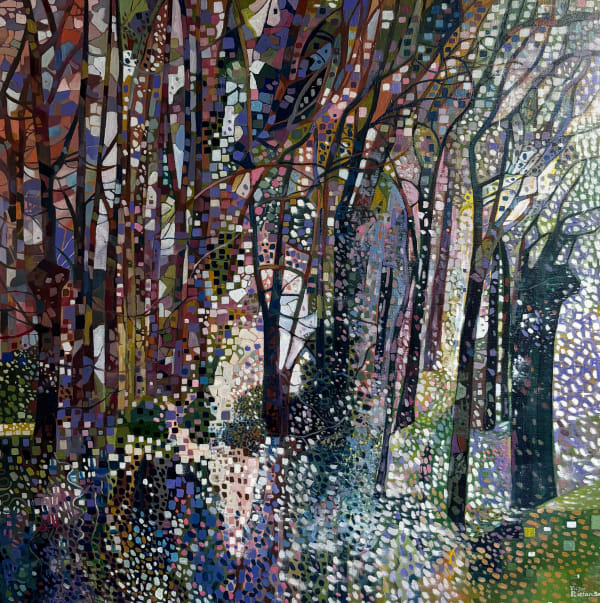Victor Richardson
"The individual dots and strokes of colour, and the juxtaposition of warm and cold hues, create an optical effect that is like a vibration. This tessellation enhances the vibrancy of colour and while the broken surface appears to move, there is also stillness, a sense of tranquility." - Victor Richardson
Originally born in East Belfast, Victor Richardson now lives and works in County Cork, and over many years he has developed a vibrant and highly distinctive style of landscape painting in the Neo-Impressionist tradition.
Richardson's work carries on the exploration of colour vibration, otherwise known as Chromoluminarism, which was pioneered by artist Georges Seurat over a century ago. Colour values are intensified by placing contrasting hues beside one another in a series of small dashes and spots. This tessellation produces a shimmering luminosity which makes his work instantly recognisable. Additionally, Richardson draws his inspiration from the play of light on water and in the air, rivers and canals from England to the Low Country of the American South. Despite the busy surface texture, his work is tranquil, with an almost Zen like quality.
He has exhibited widely in Ireland, the UK, and USA, having his work placed in public and private collections all over the world. His biggest commission to date was to paint six large oils for the bar of the recently refurbished Shelbourne Hotel; one of Ireland’s landmark buildings.
------
Artist's Statement;
"I am self taught - an Autodidact to use the fancy word for it. For as long as I can remember I could draw without difficulty. I was given lessons in oil painting from the age of 10 by a family friend who was an established painter in Belfast. I learned how to mix colour, prepare and stretch canvas, and to do many of the practical tasks of the painter's craft. It was an invaluable lesson and my only formal training. As I grew older I made regular visits to the Ulster Museum, lingering in the galleries for hours, lost in wonder. The first time I travelled to Dublin to visit the National Gallery and the Hugh Lane collection, I thought I had died and entered paradise.
I married and moved to Cork and I gradually began to sell drawings, first in charcoal and then in pastel. It was a great stroke of luck to approach a major Dublin gallery and be accepted on my first attempt. I will always be grateful to Suzanne MacDougald who was willing to take a chance and show my work, mainly pastels, in the Solomon Gallery for the next 25 years. I gradually developed an intuitive approach to colour, which I am told interprets the painting method that George Seurat called Chromoluminarism. The individual dots and strokes of colour, and the juxtaposition of warm and cold hues, create an optical effect that is like a vibration. This tessellation enhances the vibrancy of colour and while the broken surface appears to move, there is also stillness, a sense of tranquility".


